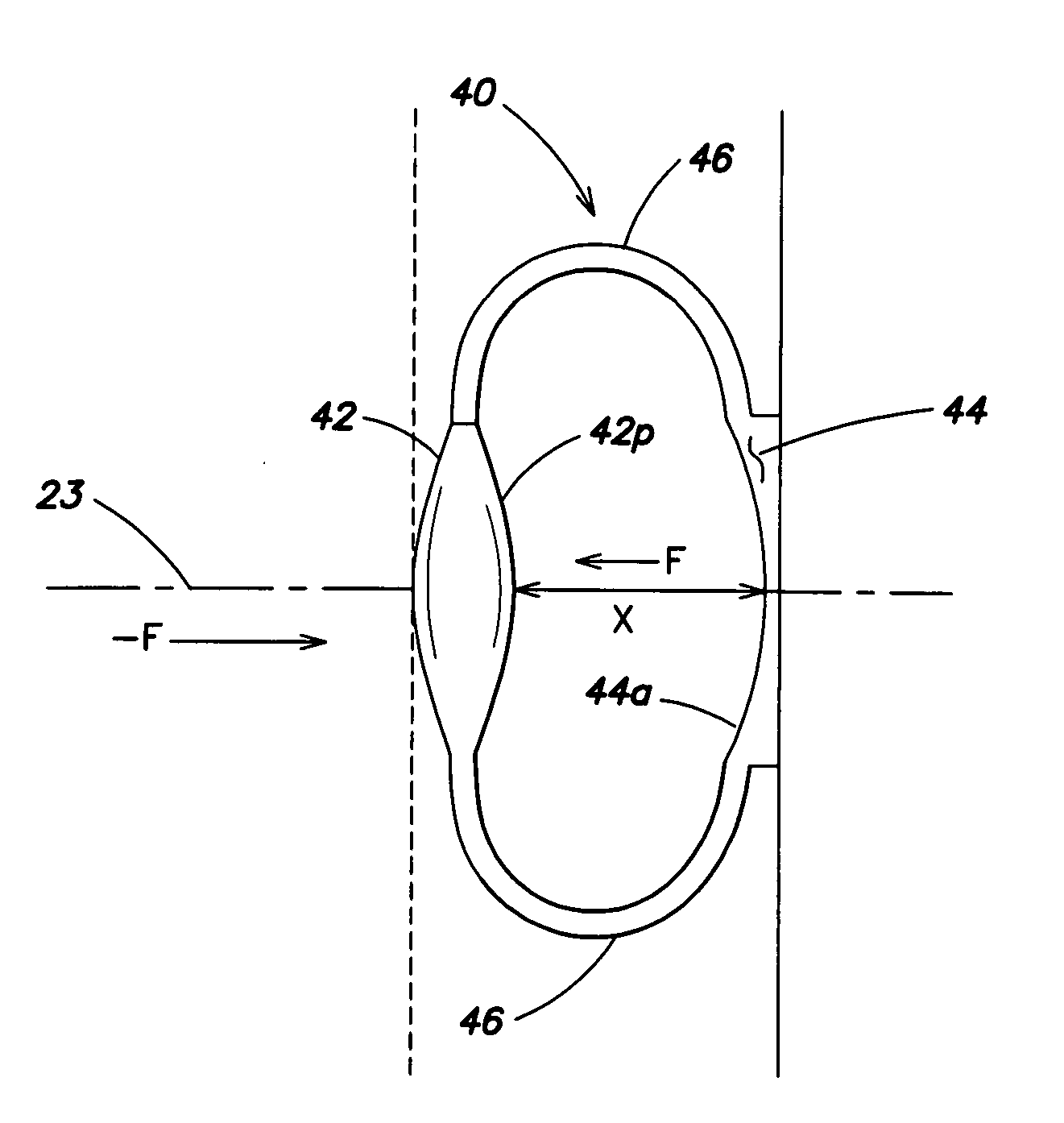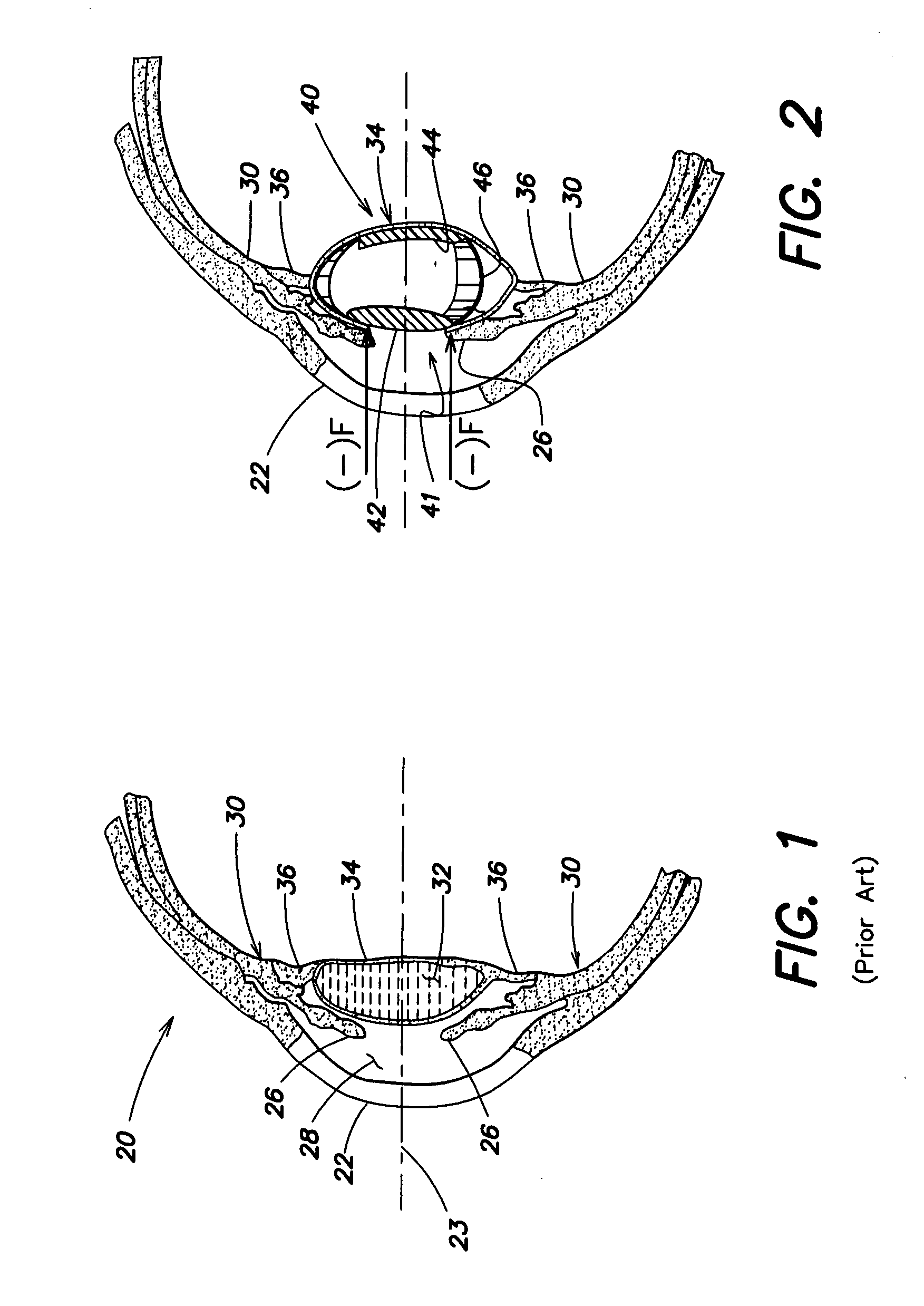Accommodative Intraocular Lens Having Defined Axial Compression Characteristics
a technology of axial compression and intraocular lens, which is applied in the field of multi-component aiols having defined axial compression characteristics, can solve the problems of unsuitable distance vision, natural lens in unaccommodated state,
- Summary
- Abstract
- Description
- Claims
- Application Information
AI Technical Summary
Benefits of technology
Problems solved by technology
Method used
Image
Examples
Embodiment Construction
[0026] An exemplary A-IOL 40 for implantation into the capsular bag of an eye in place of the natural crystalline lens is shown in FIG. 3. A-IOL 40 is configured to change the refractive properties of the eye in response to the eye's natural process of accommodation as described above. The A-IOL 40 includes an anterior optic component 42, a posterior optic component 44 and three identical, single-piece, flexible biasing elements 46, which join the anterior and posterior optics and facilitate the relative translational movement of the components along the optical axis 23. (It will be understood that when the A-IOL is implanted, the posterior optic is intended to remain stationary in the posterior region of the capsular bag, while the anterior optic translates along the optical axis for accommodative effect). In alternative aspects, two biasing elements or four or more biasing elements may be provided. In another alternative aspect, the biasing element 46 may be of one piece and joine...
PUM
 Login to View More
Login to View More Abstract
Description
Claims
Application Information
 Login to View More
Login to View More - R&D
- Intellectual Property
- Life Sciences
- Materials
- Tech Scout
- Unparalleled Data Quality
- Higher Quality Content
- 60% Fewer Hallucinations
Browse by: Latest US Patents, China's latest patents, Technical Efficacy Thesaurus, Application Domain, Technology Topic, Popular Technical Reports.
© 2025 PatSnap. All rights reserved.Legal|Privacy policy|Modern Slavery Act Transparency Statement|Sitemap|About US| Contact US: help@patsnap.com



